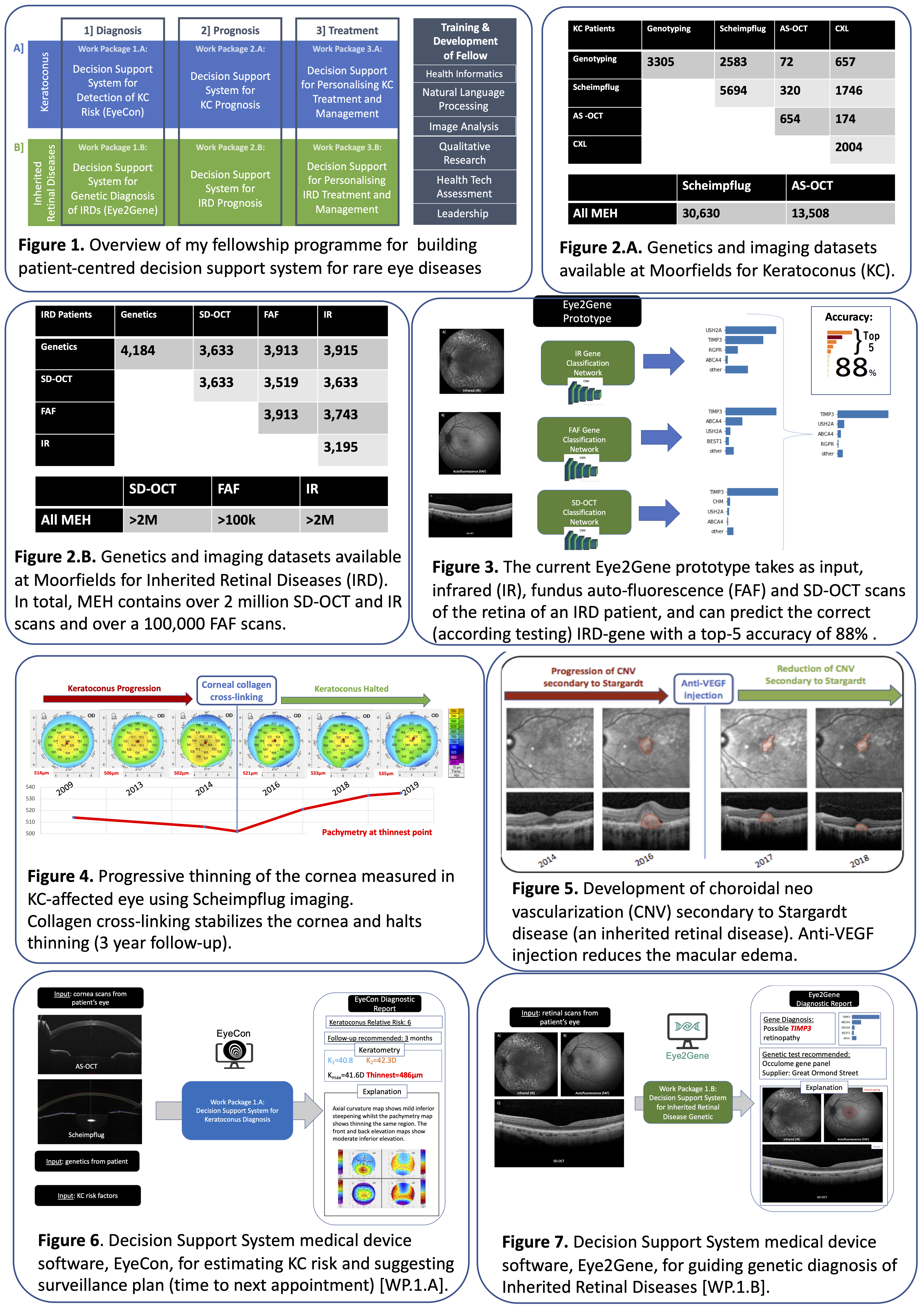PARADIGM
PAtient-centric decision support systems for RAre eye Diseases, Integrating Genetics and Multimodal imaging
Aim
To improve diagnosis and care of patients affected by rare eye diseases by providing healthcare professionals with software to support their decisions.
Background
Rare eye diseases are a leading cause of blindness in children and young adults in the UK. These include diseases affecting the retina, the light-sensitive tissue at the back of the eye, or the cornea, the transparent tissue at the front of the eye that focuses light. Patients with rare eye diseases are a vulnerable population with a decreased quality of life. This is often because they are diagnosed late, not adequately treated or followed-up. My research aims to improve diagnosis, prognosis, treatment and care of these patients by developing software to enable healthcare professionals to detect disease earlier and make patient-centred decisions about their treatment and care. Health data and coordinated care are essential to the NHS and to patients as illustrated by this patient statement:
I want my health data to be managed securely and shared with the right people, to be used effectively for my benefit and others like me.
This is especially true for rare diseases affecting the eye, where multidisciplinary teams of highly-trained specialists are needed to make important decisions for each patient about their diagnosis and their personalised treatment plans (e.g low-vision correction, surgical interventions, prescriptions of medication or psychological support). This expertise is not widely available, consequently few patients receive this quality of care. Computer algorithms that detect patterns in large amounts of NHS data can help in making these expert decisions more widely available to patients with rare eye diseases in the UK, and more accurate by assisting healthcare teams in the decision-making process.
Design and methods
Large amounts of medical imaging data, genetic data (DNA), clinical notes and patient questionnaires from Moorfields Eye Hospital and other participating eye hospitals, that has been curated by experts in rare eye diseases, will be used to prepare large training datasets to develop computer algorithms that can detect new patterns which can assist healthcare professionals in their decisions for:
- diagnosing
- predicting the evolution of disease (prognosis)
- discovering which treatment plans are the most effective on a patient per patient basis.
This will help healthcare professionals make better informed decisions and provide better care and support to rare eye disease patients.
Patient/service user, carer and public involvement
Rare eye disease patients, including a group of four patient collaborators, have been involved in conceiving and designing this proposal through focus groups, workshops and patient days. Patients explained their needs in terms of understanding and sharing their complete health data with the right people to deliver more equitable improved care to all, and to aid research towards a cure. The challenges of rare eye diseases were presented to patients and computer algorithms were recognised as tools that could help healthcare professionals in making the most informed decisions for patients provided these were trained on high-quality aggregated health data. Four patients volunteered to be involved throughout the project by providing regular input at yearly meetings.
Dissemination
The computer software and findings from this proposal will be made available to NHS healthcare professionals, in an effort to optimise the use of healthcare data for patients with rare eye diseases. Patient focus groups will be formed and convene regularly in support of the patient access and input element of the work. Findings and results will be published in open-access scientific journals (at least one patient author will be included per publication). Lay summaries will be sent to participants and to media outlets for public engagement. Patient support groups and charities will be engaged. Along with the project advisory group, three additional patients will be Patient Public Involvement leads and help with dissemination to other people affected by rare eye diseases.

